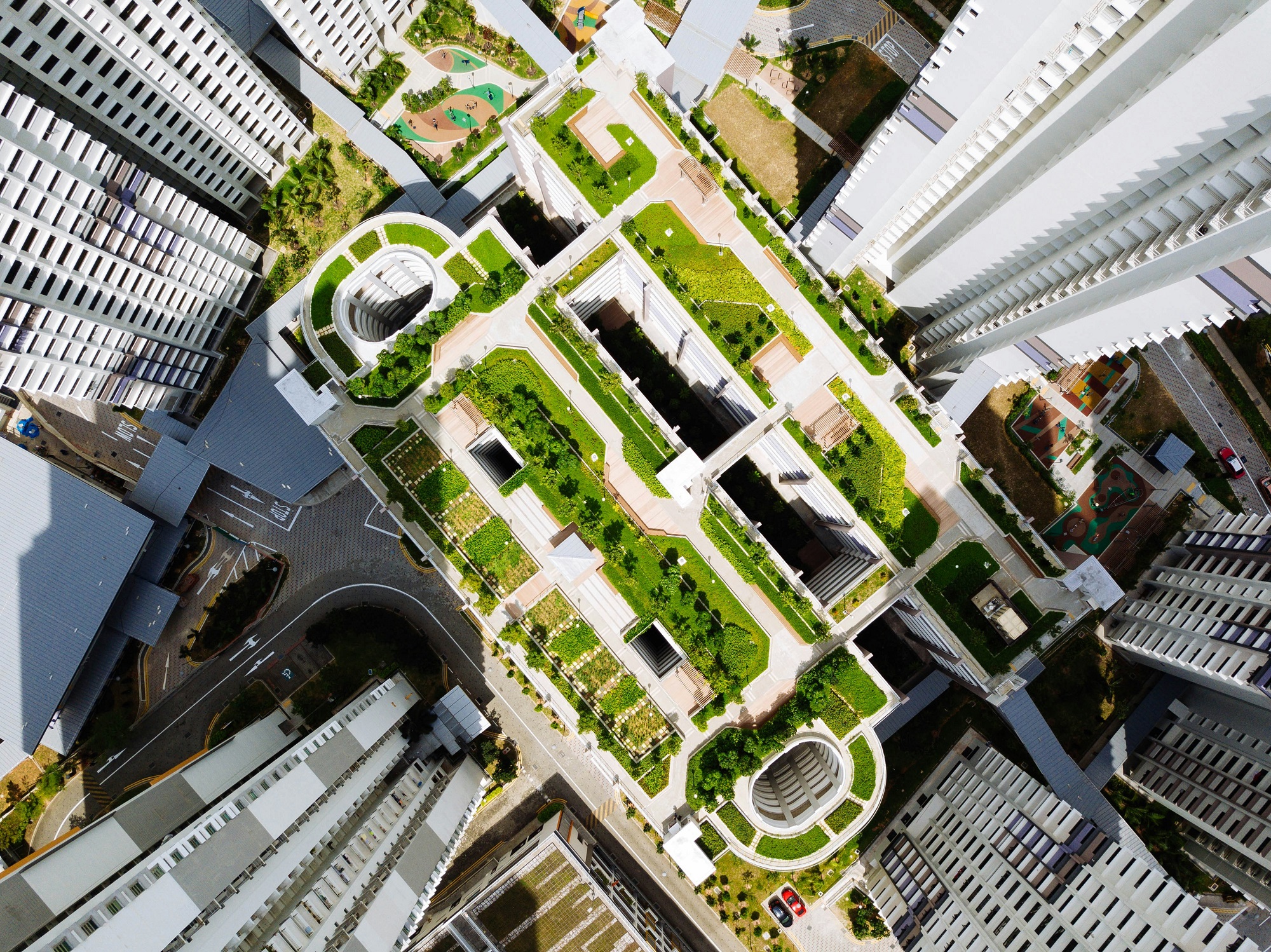World Green Building Week

As the construction industry faces growing pressure to reduce its environmental impact, World Green Building Week (8th – 12th September) is a timely reminder of the role we all play in building a more sustainable future.
With the built environment responsible for a significant share of global carbon emissions, there’s increasing urgency around meeting carbon targets, and World Green Building aims to spotlight sustainable construction and the role of decarbonisation and future-proofing building strategies.
Louis Saunderson, Sustainability Analyst at Seddon, works day-to-day on directly shaping Seddon’s green building and wider sustainability initiatives, bringing a unique perspective and specialist expertise to meeting sustainability targets in construction using data-driven insights. Louis’ role sees him out in the field, on site collecting data and reviewing pilots, as well as time in the office analysing the numbers.
Louis shares his insights on how his role and expertise is directly impacting on sustainability at Seddon, and shares insights into the key focuses and the future of green building and wider sustainability initiatives in the construction industry:
My role sits within sustainability in construction, and most of the pressure we face come through the lens of carbon. Our clients have carbon targets to meet, which then cascade on to us at Seddon. I analyse and report carbon data – mainly on fuel use on construction sites, energy consumption, transport emissions, and waste management.
Roughly 20–30% of my time is spent working on the data, and the remaining time is focused on turning technical insight into meaningful action. The data I work with has a direct impact on helping our project teams reduce fuel use, minimise waste, make procurement more sustainable, and make informed decisions that lead to lower emissions.
A large part of the role is about change management and using data to support the wider business in making strategic decisions that help us meet our carbon goals over the next two to five years. I regularly forecast our emissions and carbon, enabling me to pinpoint future carbon hotspots, and recommend proactive changes for carbon reductions and create proactive strategies to mitigate the impact.
We are also extremely focused on waste management, and this has been one of our biggest successes. Seddon has achieved a 73% reduction in carbon emissions from waste since 2021. We’ve focused on better separation, recycling, and storage of materials on site, ensuring skips are suited to the type of waste expected at each project stage. We’ve also aligned procurement more closely with construction timelines to reduce over-ordering and excess.
The most important areas of sustainability in construction right now
Currently, the biggest focus in construction sustainability is carbon, and more specifically, understanding and reducing both operational and embodied carbon. Operational carbon refers to the energy used to run a building once it’s complete, and it’s an area the industry has made good progress in. Energy-efficient lighting, high-performance insulation, and low-carbon heating systems are now common features in new builds.
The more complex and pressing challenge is embodied carbon, meaning the emissions associated with producing, transporting, installing, maintaining, and eventually disposing of building materials. Unlike operational carbon, which is relatively easy to measure and manage, embodied carbon spans the entire 60–70-year lifecycle of a building. To truly reduce our carbon as a business, we now need to account for emissions at every stage: from raw material extraction and manufacturing to construction, repair, and end-of-life demolition. This is currently my primary focus in my role of sustainability analyst at Seddon.
The key challenges & the future of green building
One of the biggest challenges in delivering truly sustainable buildings is managing lifecycle carbon – the total carbon footprint of a building from construction through to demolition. While it’s relatively straightforward to design low-carbon buildings on paper using efficient components and systems, delivering those designs within the financial constraints of real-world projects is far more difficult.
A key issue lies in how budgets are structured, especially in the public sector. Capital budgets, used for construction, can often be separate from operational budgets, which cover the running costs of a building over its lifetime. That can make it difficult to justify long-term sustainability measures.
For instance, a building that costs 5% more to construct but delivers a 20% reduction in running costs over 50 years may not be approved, largely because the capital and operational savings sit in different silos. The disconnect between upfront cost and long-term value remains one of the most persistent barriers to delivering low-carbon buildings at scale.
Regulation is another major factor shaping our approach to sustainability. Public Procurement Notice (PPN) 06/21 is the regulation which mandates contractors applying to procure and deliver individual public sector contracts with a value of £5 million or over. This regulation requires a construction firm to provide a carbon reduction plan, detailing how they are decarbonising their own operations. However, it does not mandate the associated carbon reporting of the actual project itself.
From January 2026, the UK Sustainability Reporting Standard (UK SRS) will also come into force, initially applying to large unquoted companies and Limited Liability Partnerships (LLPs), but is expected to broaden in scope. This regulation will bring mandatory enhanced focus on operational reporting, environmental risk analysis, and reporting and transparency around supply chain sustainability.
On top of that, broader legislation like the UK Climate Change Act (2008) and its five-year national carbon budgets are exerting increasing pressure on the industry. Because we work closely with public sector clients, their carbon reduction obligations inevitably cascade down to us and raises the bar for sustainable delivery across the board.
Engaging the workforce on sustainability practices
One of the most important and often overlooked aspects of delivering sustainable outcomes is engaging the people who make day-to-day decisions on site and in the office. Rather than rewriting established processes, my role is to support and upskill teams by giving them the technical insights and context they need to make more sustainable choices themselves.
For example, I’ll analyse data on fuel consumption, procurement timelines, or waste streams and present it in a way that directly informs practical decisions. That might mean exploring where lower-carbon materials can be sourced without affecting timelines, comparing cost versus carbon to inform discussions with clients, or simply helping a site team determine whether they’re using the right type of skips for the current stage of a project.
The key is making data tangible and actionable. People are far more engaged when they can see how sustainability relates to their own role and when they feel empowered to take ownership of those decisions. Sustainability is often framed an exciting disruptor, which can scare people, so it’s important to keep team members in their comfort zones while simultaneously acknowledging the need for managed changes. It’s not about enforcing change from the top down; it’s about embedding sustainability into everyday thinking across the business.


